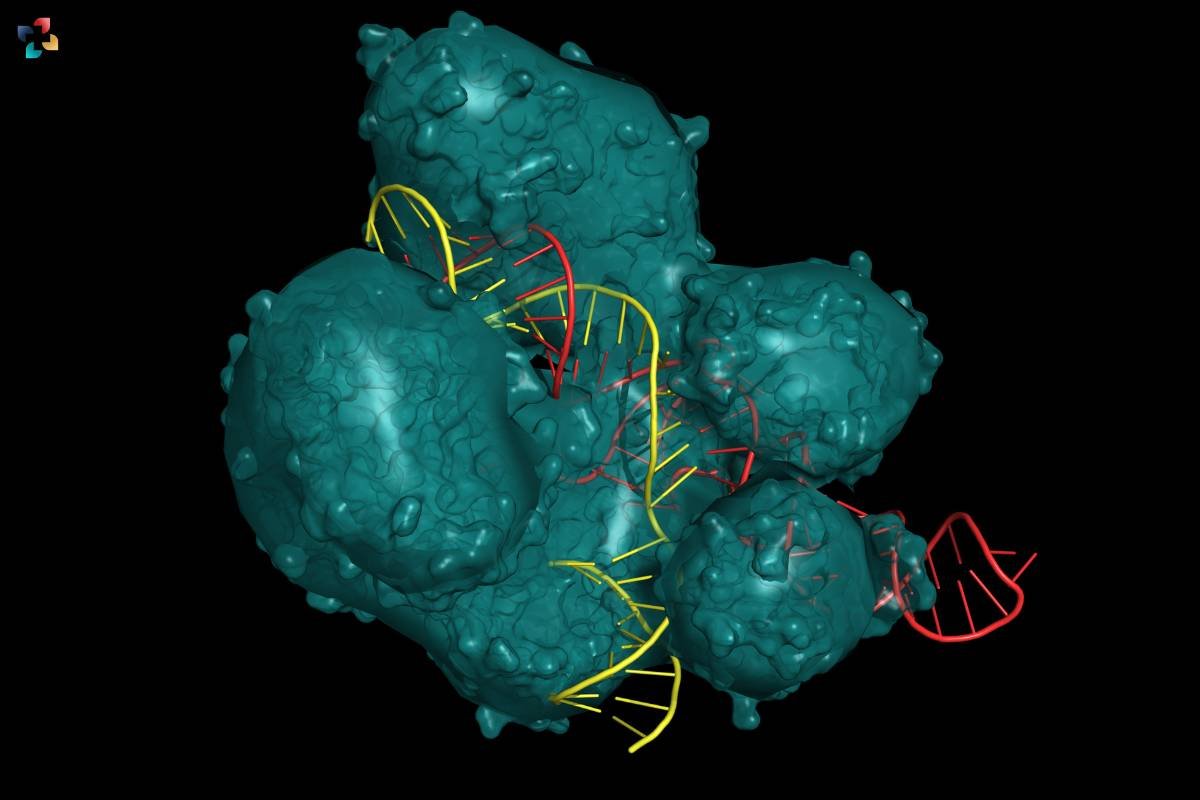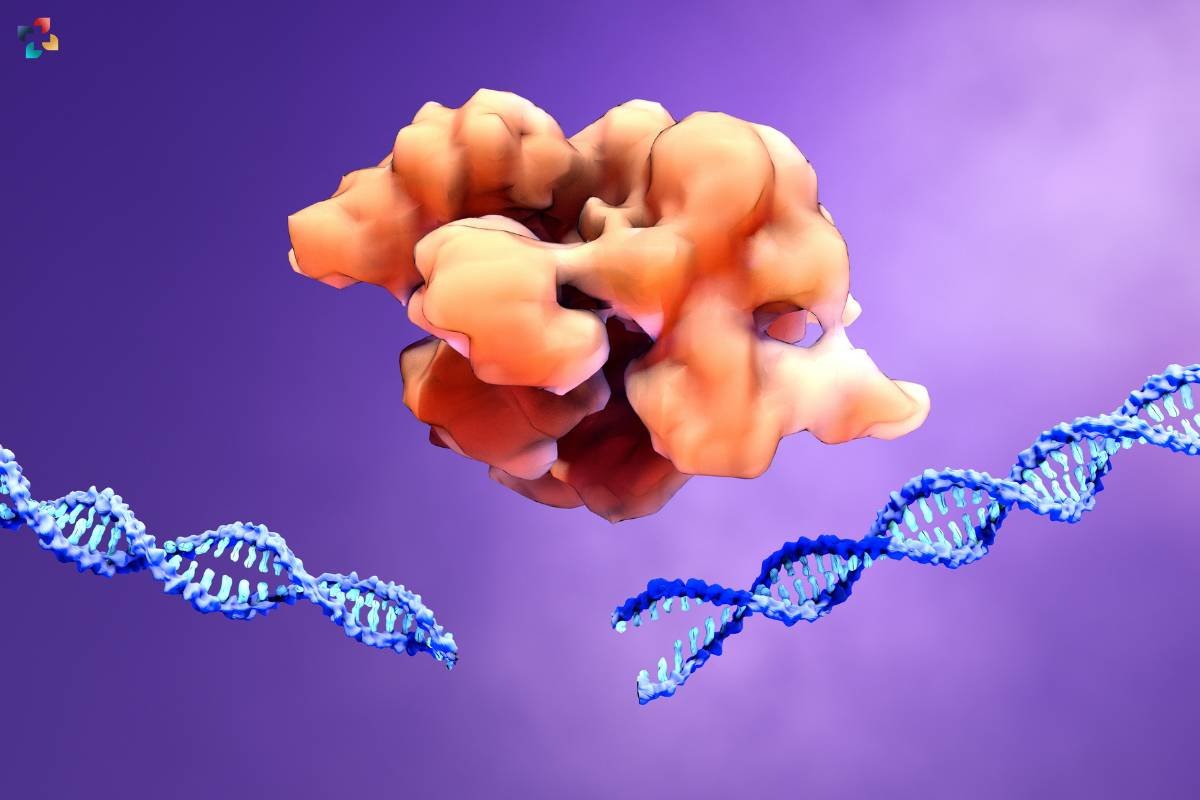Source-New Atlas
CRISPR genome editing stands as a revolutionary paradigm in the field of genetic engineering, offering unprecedented precision in manipulating the fundamental building blocks of life. This article delves into the intricate world of CRISPR, exploring its origins, mechanisms, applications across diverse fields, ethical considerations, and the transformative potential it holds for reshaping the future of science and medicine.
1. The Genesis of CRISPR Genome Editing
CRISPR, an acronym for Clustered Regularly Interspaced Short Palindromic Repeats, originated as a bacterial defense mechanism against viral invaders. Scientists harnessed this natural system, discovering its potential to edit genes with unparalleled accuracy. The CRISPR-Cas9 system, a molecular toolkit derived from this bacterial defense mechanism, emerged as a game-changer, offering a programmable and highly efficient means of altering DNA sequences.
2. Mechanisms of CRISPR Genome Editing
At the heart of CRISPR genome editing lies the Cas9 protein, guided by RNA molecules to precisely target specific DNA sequences. The RNA molecules are engineered to match the target genes, directing Cas9 to the desired location for modification. This molecular scalpel can then cut the DNA, initiating a repair process that introduces desired changes, including gene insertions, deletions, or replacements. The simplicity and versatility of CRISPR-Cas9 make it an invaluable tool for genetic manipulation.
The brilliance of CRISPR-Cas9 lies in its ability to act as a precise molecular scalpel within the intricate realm of DNA. After Cas9 is guided to its target by RNA molecules, it executes its function with surgical precision, cleaving the DNA at the specified location. This incision prompts the cellular repair machinery to kick into action, leading to the introduction of desired changes.
The versatility of CRISPR-Cas9 is underscored by its capacity not only to edit genes but also to insert, delete, or replace DNA sequences, allowing for a spectrum of genetic modifications. This simplicity and adaptability have propelled CRISPR-Cas9 to the forefront of genetic manipulation, opening avenues for transformative advancements across scientific disciplines.
3. Applications Across Diverse Fields

CRISPR genome editing’s transformative capabilities extend far beyond the confines of a laboratory, permeating diverse fields with revolutionary applications. From unraveling the mysteries of human genetics in biomedical research to reshaping the agricultural landscape and offering novel therapeutic avenues, CRISPR’s impact is profound. This section delves into the multifaceted applications of CRISPR across various disciplines, illustrating its versatility and potential to redefine the boundaries of what is achievable in science, medicine, and agriculture. As we explore these applications, we uncover the far-reaching implications of CRISPR genome editing in forging a future where precision genetic manipulation shapes the course of scientific innovation.
i. Biomedical Research
CRISPR genome editing has revolutionized biomedical research, allowing scientists to study the functions of specific genes and model diseases with unprecedented accuracy. This accelerates the development of new therapies and treatments.
ii. Agriculture
In agriculture, CRISPR is employed to enhance crop characteristics, improve yields, and make plants more resistant to pests and diseases. This holds immense promise for sustainable and resilient agriculture.
iii. Therapeutic Potential

CRISPR-Cas9’s therapeutic applications range from correcting genetic disorders at the embryonic stage to treating diseases in living organisms. The potential for personalized medicine is a transformative aspect of CRISPR’s medical applications.
Related: Unlocking the Code of Life: Exploring Genome Editing and CRISPR-Cas9
4. CRISPR Genome Editing in Disease Treatment
The precision of CRISPR genome editing opens new frontiers in treating genetic disorders and diseases. From correcting mutations responsible for hereditary conditions to developing targeted cancer therapies, CRISPR offers hope for previously untreatable conditions. However, ethical considerations surrounding germline editing and unintended off-target effects demand careful scrutiny.
In the realm of disease treatment, CRISPR genome editing emerges as a potent tool capable of rewriting the molecular underpinnings of genetic disorders. The precision afforded by CRISPR allows scientists to target specific genetic mutations responsible for hereditary conditions, offering the potential for curative interventions. This holds immense promise in addressing conditions that were once considered untreatable or only manageable with limited success.
One notable arena where CRISPR shines is in the development of targeted cancer therapies. By honing in on the genetic anomalies driving cancerous growth, CRISPR enables the creation of therapies tailored to the unique genetic makeup of individual tumors. This level of precision not only enhances the efficacy of treatment but also mitigates the risk of harming healthy cells, a common challenge in traditional cancer treatments.
While the therapeutic potential of CRISPR is vast, ethical considerations loom large on this innovative landscape. Germline editing, the modification of genes in reproductive cells, raises ethical questions about the permanence and inheritability of genetic changes. Unintended off-target effects, where CRISPR may inadvertently modify non-targeted genes, necessitate meticulous scrutiny to ensure the safety and integrity of the genome.
As CRISPR genome editing progresses toward clinical applications, the delicate balance between its transformative potential and ethical responsibilities becomes increasingly crucial. Striking this balance will be integral to harnessing the full therapeutic power of CRISPR while ensuring the responsible and ethical use of this groundbreaking technology in the realm of disease treatment.
5. Ethical Considerations
The immense potential of CRISPR genome editing is accompanied by ethical considerations, especially in the context of germline editing. The ability to manipulate the genetic code raises questions about the responsible use of this technology, potential unintended consequences, and the need for ethical guidelines to ensure its ethical and equitable applications.
6. CRISPR’s Future Trajectory

As CRISPR genome editing continues to evolve, ongoing research explores CRISPR-Cas systems beyond Cas9, addressing limitations and enhancing precision. The development of base editing and prime editing techniques showcases the commitment to refining and expanding the CRISPR toolkit, paving the way for even more precise and versatile genetic manipulations.
Conclusion
CRISPR genome editing stands at the forefront of a genetic revolution, offering unparalleled precision in rewriting the code of life. From its humble bacterial origins to transformative applications in medicine, agriculture, and beyond, CRISPR has reshaped the landscape of genetic engineering. As scientists navigate the complexities of ethical considerations and refine CRISPR’s capabilities, the future promises a new era where genetic diseases may be treated, and the boundaries of what is possible in genetic manipulation are continually pushed.







